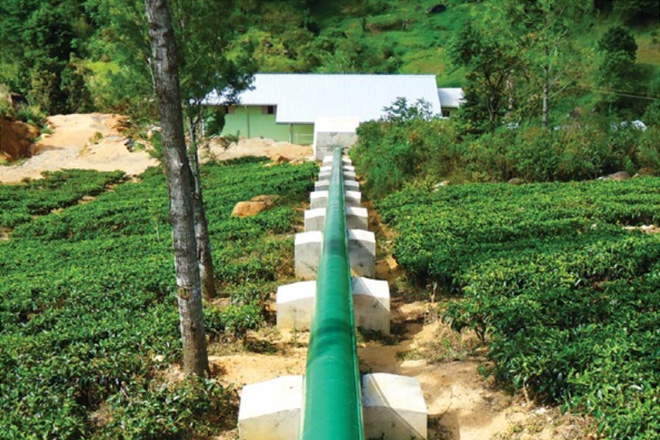ICRA Lanka views recent developments in the hydro power sector to be credit positive. We based our assessment on three factors, (1) availability of sufficient water flows (run off river flow) due to favourable weather conditions that prevailed last year, (2) the Ceylon Electricity Board’s (CEB’s) decision to renew Power Purchase Agreements (PPAs) with hydro power producers with expired contracts, and (3) likely increase in Avoided Cost tariff structure due to volatility in oil prices.
However, ICRA Lanka has noticed that the power producers have recently experienced a longer payment cycle from the CEB and therefore, this remain as a concern. The Power sector is a critical sector in the economy and it is worth over LKR 291 Bn (2018). About one third of the electricity generation is generally consumed by the industrial sector. Going forward, with the revival of economic activities, we expect the demand for power to grow by 5 - 6% over the next two years, thereby aiding private power producers to benefit from the surging demand. The Hydro power segment, (including the major hydropower plants) in the country, is the second largest contributor to the total installed power generation capacity in Sri Lanka (43% in 2018).
Privately owned mini-hydro plants (which are less than 10 MW capacity each) account for about 6 - 8% (366 MW in 2018) of the total installed capacity. In the 4Q of 2019, Sri Lanka's hydropower generation was at a higher level due to favourable weather conditions that prevailed in the country. This is a credit positive for the mini-hydro producers as they would benefit from the increased power generations (in the absence of the deemed hydrology clauses in their PPAs with the CEB).
However, going forward, given the vagaries of the weather conditions of Sri Lanka, the ability for these mini-hydro power producers to operate at optimum level will be subdued. Figure 1: Electricity generation by source and type (GWh) Source: CBSL Figure 2: Installed capacity by source and type (MW) Source: CBSL In Sri Lanka, the state-run Ceylon Electricity Board (CEB) controls the electricity sector-value chain and is authorized to decide new tariff structures and identify/implement new sources of power generations based on its long-term generation plan.
The Sri Lanka Sustainable Energy Authority (SEA) provides further guidance and approval for Non-Conventional Renewable Energy (NCRE) segment. Approximately 77% (2018) of the electricity generation in the country is produced by the CEB, while the rest is supplied by the private power producers by entering into PPAs. Prior to 2008, the CEB signed PPAs based on the Avoided Cost principle, wherein power generation companies were paid the equivalent unit generation cost that the CEB reported. Due to large scale inefficiencies within the CEB, this arrangement was seen to be disadvantageous to the CEB. Hence, a three-tier tariff structure was then introduced in 2008. Since 2016, the government has introduced competitive tendering process for renewable energy projects.
Although, mini-hydro power segment was initially considered to be excluded from this scheme due to the complexity of the construction of mini hydropower plants, the decision has not been finalized yet. PPAs are generally signed for 15 to 20-year durations, and most of the PPAs that are under avoided cost tariff structure, have expired in the recent past. Given the financial position of the CEB, initially, it was considering to review the PPAs upon their expiry, as a measure to improve its financial position.
Hence, the renewals of such expired PPAs were delayed. However, these power plants continued to supply energy to the national grid at a lower tariff structure, which was generally offered for expired PPAs. During early this year, the authorities have finalized a new tariff structure (fixed tariff with an escalation on annual basis) for such PPAs. The revised tariff structure for such power plants is favourable as this is a further increase from the previous transitory tariff levels. In addition, the new tariff plan will be applicable retrospectively from 1st of January 2019, allowing the power producers to recover some profits. Therefore, the CEB’s decision to renew expired PPAs is a credit positive for mini hydro power producers, whose PPAs had expired in the recent past.
As mentioned before, the hydropower production level is likely to decline going forward, given vagaries of the weather conditions of Sri Lanka. Consequently, Ceylon Electricity Board will be compelled to increase the reliance on thermal energy and Emergency PPAs, leading to increase in unit cost of production for the CEB. Moreover, given the heightened US-Iran geopolitical tensions, we expect the oil prices to remain volatile over the next two years and as a result, the cost of energy production for the CEB is likely to increase further.
We also expect the increase in cost of thermal energy production to be reflected for the remaining PPAs that are under the Avoided Cost tariff structure, benefiting the mini-hydro producers, with augmented profit margins in the next couple of years. This will be a credit positive for mini hydro producers, who are still having PPAs under the Avoided Cost tariff structure. However, ICRA Lanka has also noticed Sri Lankan mini-hydropower producers have recently faced increased climatic risks due to global warming.
buy symbicort online buy symbicort online no prescription
This together with policy uncertainty in relation to the new mini-hydropower plants (as mentioned above), have compelled most power producers to diversify their operations. In addition, over the recent past, the power producers have also experienced a longer payment cycle from the CEB ICRA Lanka will continue to monitor the impact on the power producers from these new developments.

